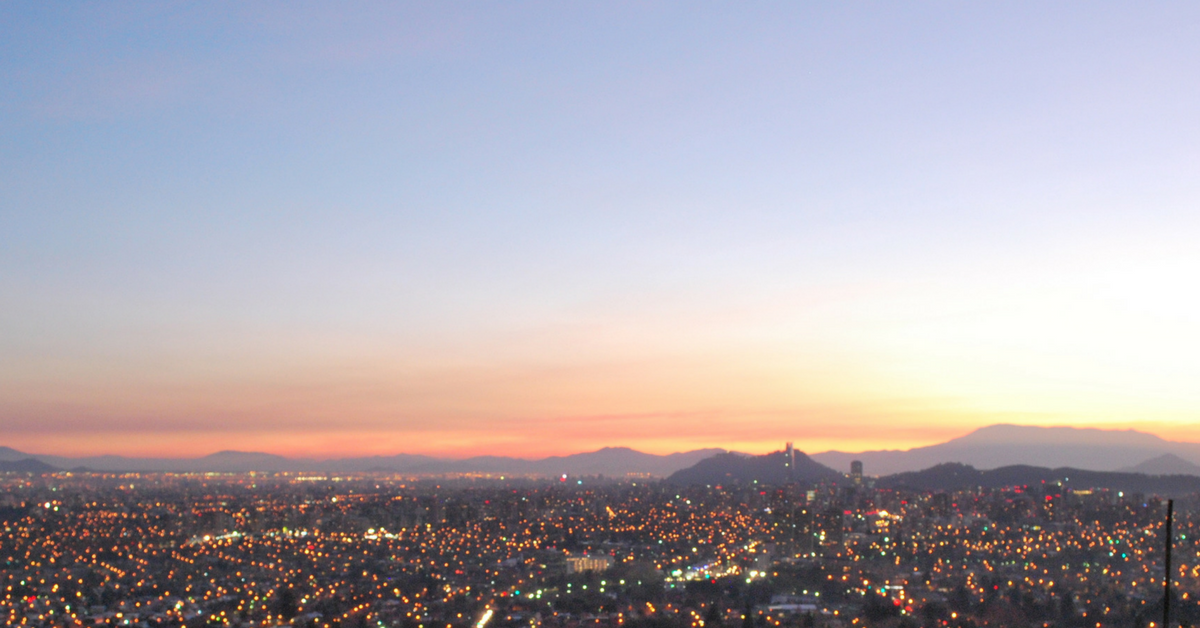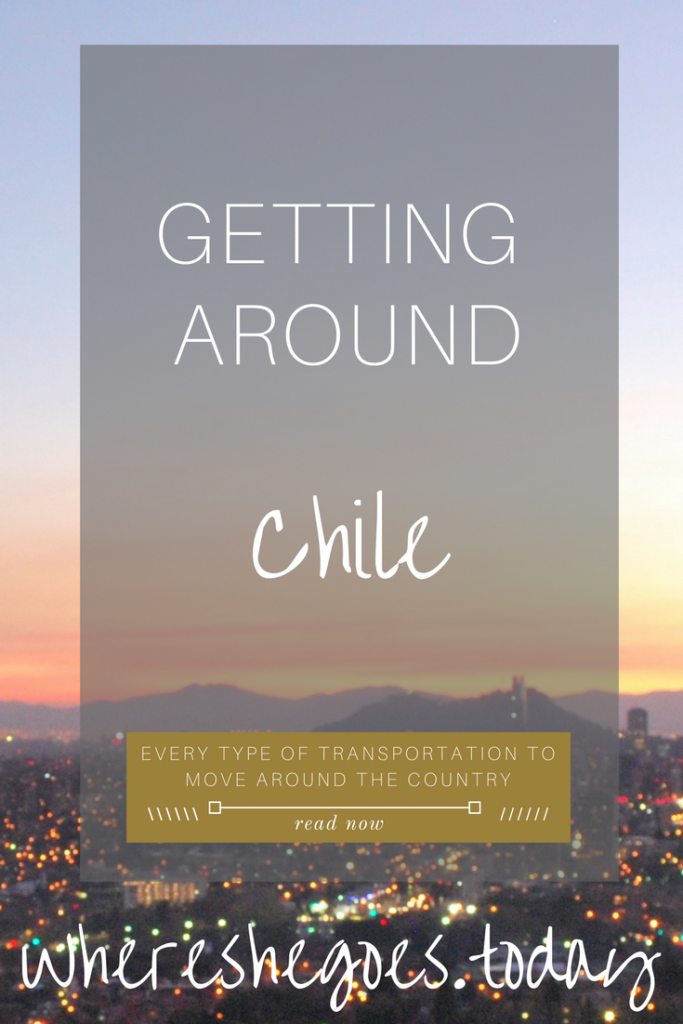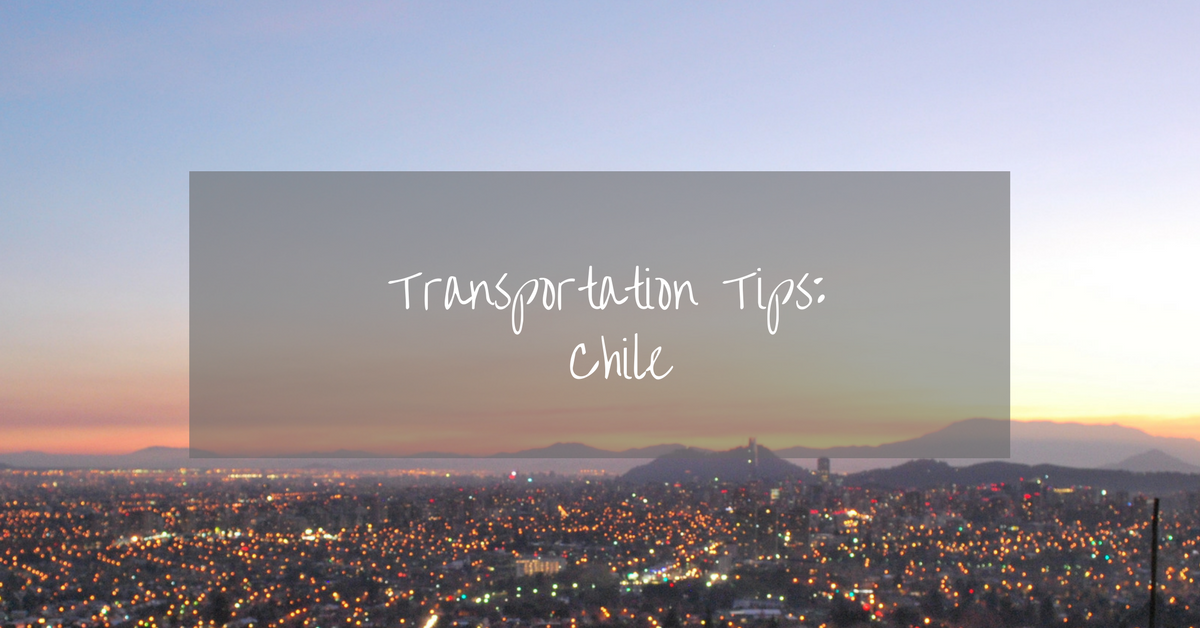 Whether you’re a wild wanderer, a planner, or somewhere in between, it always comforting to know where you’re going. Chile unique geography can be challenging to take on
Whether you’re a wild wanderer, a planner, or somewhere in between, it always comforting to know where you’re going. Chile unique geography can be challenging to take on
However, transportation in Chile is pretty straightforward and very accessible. In a previous post, I talked about how to move around the capital city of Santiago. That came with an overflow of requests from you guys about how what is the best way to move around the country.
Here is what I know:
Arriving in Santiago:
Almost everyone who visits Chile will arrive in Santiago. If you have a connecting flight to another destination within Chile you most likely will not leave the airport. If you decide to stay in Santiago or need to travel to a train station these are your options:
Public Taxi
You just go out the street, there will be plenty of drivers offering to take you anywhere you want. Have them charge by the meter or if they insist on a set price, try and negotiate a price that you feel comfortable with.
Shared Transfer
This is my preferred method of transportation to and from the airport. You share a large van with other passengers who are staying in the same area as you. It might take a bit longer than a taxi but it’s half the price. If you purchase you’re to and from together online, you can save 10%There are several companies that offer this service but Transvip is my preferred and the only one I’ve personally used.
Public transportation:
Every 10 minutes from 5:55 AM to 22:30 there is a bus called CentroPuerto that goes to and from the Airport. If you want to take this option, you can take them from several subway station stops throughout the Red Line (Linea 1) such as Estacion Central, Universidad de Santiago, and Los Heroes. This is the cheapest option at about 3 USD
Ride Sharing Apps:
Uber and Cabify are available for pickup. There are designated pickup areas for both apps which should pop up once the GPS picks up your location. No worries, there is free WIFI at the airport.
Types of Transportation available for moving throughout the country:
Trains:
Train rail system has been around since the 1880’s and has had plenty of ups and downs throughout the years. Currently, there are several destinations that you can travel to via train within the Central Valley Region. The information online isn’t very clear but leaving from Santiago you can ride to Rancagua via Metro Tren or to Chillan via TerraSur. You would need to arrive at Estacion Central, which is also a stop along the Red line of Metro of Santiago.
Flying:
This will be your fastest option to move around the Country. There are a few national airlines that offer great deals occasionally. You might have already heard of LATAM, as it is Latin America’s largest airline holding company and based in Santiago, Chile. They also are part of the One World Loyalty program. So if you frequently fly with American Airlines, British Airways or Iberia just to name a few, you can continue to rack up miles or even possibly use your miles to book these national flights. I personally just used my miles to book my round trip to visit San Pedro de Atacama for 7.000 Kilometers and just paid about 25 USD in Taxes.
The other airline that is competing closely with LATAM is Sky Airlines and JetSmart. Sky is a low-cost airline flies to 18 different destinations and constantly has offers to fly at very low cost. JetSmart is another low-cost airline that has recently launched this year arrived in Chile with 8 destinations this year and continuously growing.
The most popular destinations usually have their own Airport but a few require flying into a near-by city and then taking a local bus or taxi to reach final destination. Let me give you an example:
If you want to go to San Pedro de Atacama: Fly into Calama, take a taxi to the bus terminal and then take 1hr 30 minutes bus ride to San Pedro. Taxi should cost about 8.000 CLP and then bus rides are about 3.000 CLP each way
If you want to go Torres Del Paine: Fly into Punta Arenas, and take a bus to Puerto Natales. To reach the park from the city you will find two routes via BUS or Rental Car:
- Take Route 9, which links to Sarmiento and Laguna Amarga entrances of the Park
- Take Route Y 290, which takes you to the Serrano enterance of the park.
Bus
This is the most popular option as this is also provides the widest selection of destinations. If you’re going to the extreme areas of Chile, most buses offer an overnight service. The roads are very safe and have plenty of rest stops along the way. In Santiago, Estacion Central is the main terminal and can be confusion. This area is right next to a subway station with the same name, a huge street market, and also several malls. Please be careful when walking around this area and go directly to an information booth if you need help. There are several bus companies that provide services throughout the country. I’ve always gone with Pullman or Turbus. They are the largest and have the most options of destinations. There websites are only available in Spanish but the sites are pretty easy to navigate.
Renting a car:
Renting a car in Chile is a fairly easy process. You just need to be over 25 years-old, have an international drivers license, and a credit card. I would go with renting a car if you want to visit areas that have difficult access via public transportation. Renting a car an automatic vehicle will be much higher in price than a stick shift as it is not a popular option. Gas in Chile is quite pricey. At the time of this post, the average price of 1 liter of gas is 735 CLP. (USD 1.10) For my US readers, that’s about 2.940 CLP per gallon (USD 4.46)
So I think I’ve covered all the possible ways to move around. Let me know what destination you’re looking to travel to that I have covered it and I can add more information to this post.
Remember when you give good, you get good.


